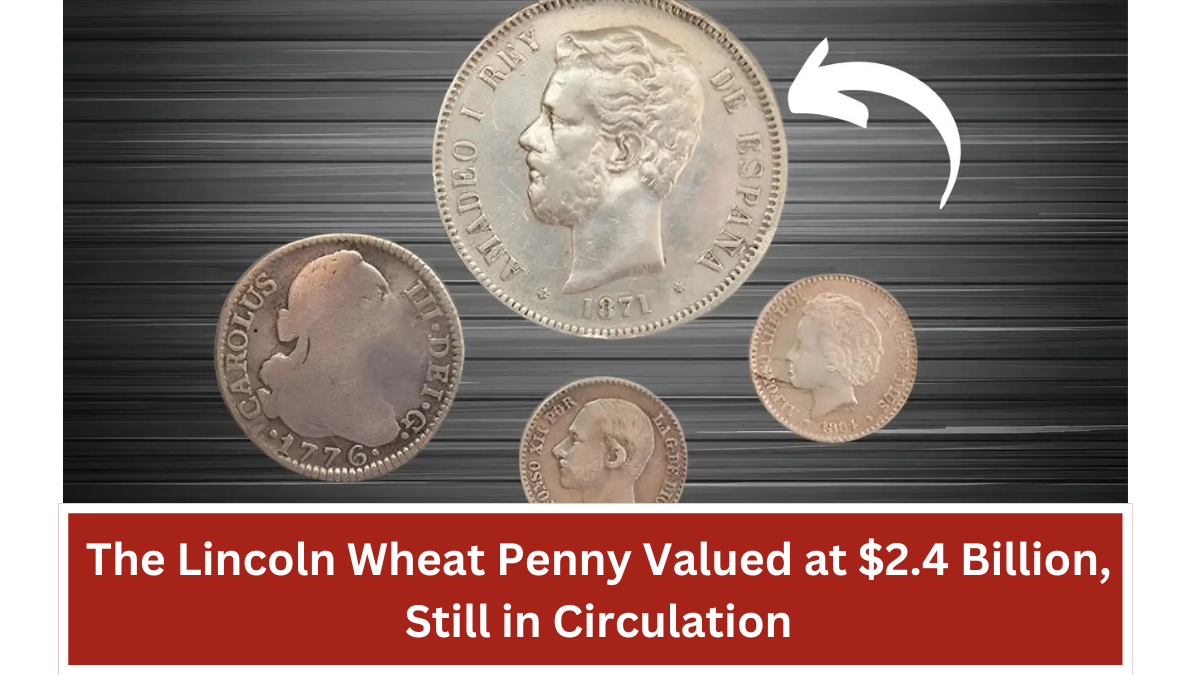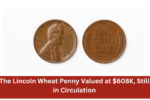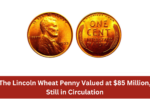The Lincoln Wheat Penny, a cherished relic of American numismatics, holds a fascinating place in coin collectors’ hearts. Originally minted between 1909 and 1958, this iconic coin features a profile of President Abraham Lincoln on the obverse and two wheat ears on the reverse, earning it the nickname “Wheat Penny.” While most of these pennies are of modest value, a select few have skyrocketed in worth, with some examples valued at millions of dollars. The collective valuation of these rare coins has recently been estimated at an astonishing $2.4 billion, and what’s more surprising is that some of these valuable coins are still circulating today. This article delves into the history, significance, and specific coin details that make these pennies so coveted.
The History of the Lincoln Wheat Penny
The Lincoln Wheat Penny was introduced in 1909 to commemorate the 100th anniversary of President Lincoln’s birth. Designed by Victor David Brenner, it was the first U.S. coin to feature the likeness of a U.S. President. Its reverse side, adorned with two wheat stalks, symbolizes America’s agricultural heritage and prosperity.
The coin was minted in Philadelphia, Denver, and San Francisco, with mint marks “D” and “S” indicating Denver and San Francisco minting, respectively. Over the years, minor design modifications occurred, but the coin’s legacy remained intact. The Lincoln Wheat Penny was succeeded by the Lincoln Memorial Penny in 1959, marking the end of an era but cementing its place in American numismatic history.
Specific Coin Details That Drive Value
Not all Lincoln Wheat Pennies are worth a fortune. The value depends on factors like rarity, mint year, mint mark, condition, and errors. Here are some key examples of highly valuable Wheat Pennies:
- 1909-S VDB Penny
- Mintage: 484,000
- Value: Up to $100,000 in mint condition.
- Details: This penny was part of the first batch and bears the designer’s initials, “VDB,” prominently on the reverse. Its low mintage makes it extremely rare.
- 1943 Bronze Penny
- Mintage: Unknown (error coin)
- Value: $1 million or more.
- Details: Most 1943 pennies were struck in steel due to copper shortages during World War II. A few bronze pennies were mistakenly minted, making them highly sought after.
- 1922 No D Penny
- Mintage: Limited (error coin)
- Value: Up to $75,000.
- Details: Coins from the Denver Mint in 1922 were struck without a visible “D” mint mark due to worn dies, creating a valuable error.
- 1955 Doubled Die Penny
- Mintage: Unknown (error coin)
- Value: $1,000 to $125,000 depending on condition.
- Details: This penny features a dramatic doubling of the date and inscriptions, making it a favorite among collectors.
- 1914-D Penny
- Mintage: 1,193,000
- Value: Up to $5,000 in circulated condition and over $100,000 in mint state.
- Details: Its low mintage and Denver Mint origin make it one of the rarest regular-issue Wheat Pennies.
How Are These Coins Still in Circulation?
Despite their rarity and value, some Lincoln Wheat Pennies continue to surface in circulation. This is largely due to their durability and the sheer number minted—over 26 billion during their production run. Additionally, many people are unaware of their worth and spend them as regular pennies. This makes coin roll hunting a popular hobby, as collectors hope to find hidden treasures among common change.
FAQs About the Lincoln Wheat Penny
- Why is the 1909-S VDB Penny so valuable?
- The 1909-S VDB Penny is valuable because of its limited mintage of only 484,000 coins and its historical significance as one of the first Lincoln Wheat Pennies ever minted. Its designer’s initials, prominently displayed, add to its appeal.
- What makes the 1943 Bronze Penny unique?
- The 1943 Bronze Penny is unique because it was an error coin. While most 1943 pennies were made of steel due to copper shortages during World War II, a few bronze planchets were mistakenly used, creating a highly rare and valuable coin.
- How can I identify a 1955 Doubled Die Penny?
- The 1955 Doubled Die Penny is easy to identify due to its dramatic doubling of the date and inscriptions like “LIBERTY” and “IN GOD WE TRUST” on the obverse. The doubling is visible to the naked eye.
- Are Lincoln Wheat Pennies made of pure copper?
- Most Lincoln Wheat Pennies (1909–1942 and 1944–1958) are made of 95% copper and 5% tin and zinc. However, pennies minted in 1943 were primarily made of steel and coated with zinc.
- How can I determine the value of my Lincoln Wheat Penny?
- To determine the value of your penny, check the mint year and mint mark, evaluate its condition, and look for any unique errors or anomalies. Consulting a coin grading service or a reputable numismatist is also recommended.
Conclusion
The Lincoln Wheat Penny is not just a piece of American history but a treasure trove for collectors and enthusiasts. While most Wheat Pennies are worth only a few cents, the rarest examples command staggering prices, contributing to their $2.4 billion valuation. Who knows? The next time you sift through your pocket change, you might just uncover a hidden gem worth a fortune.




